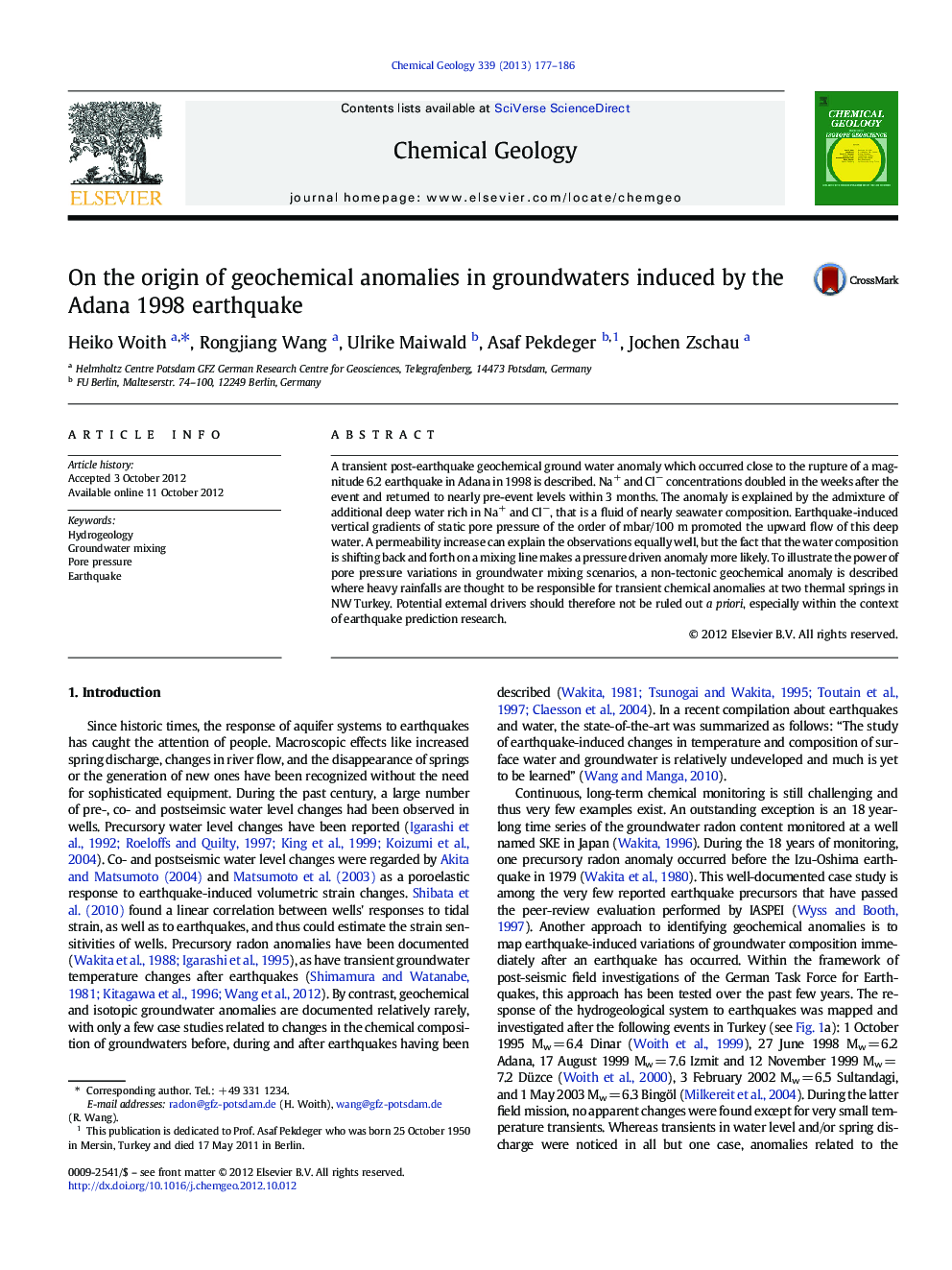| Article ID | Journal | Published Year | Pages | File Type |
|---|---|---|---|---|
| 4699136 | Chemical Geology | 2013 | 10 Pages |
A transient post-earthquake geochemical ground water anomaly which occurred close to the rupture of a magnitude 6.2 earthquake in Adana in 1998 is described. Na+ and Cl− concentrations doubled in the weeks after the event and returned to nearly pre-event levels within 3 months. The anomaly is explained by the admixture of additional deep water rich in Na+ and Cl−, that is a fluid of nearly seawater composition. Earthquake-induced vertical gradients of static pore pressure of the order of mbar/100 m promoted the upward flow of this deep water. A permeability increase can explain the observations equally well, but the fact that the water composition is shifting back and forth on a mixing line makes a pressure driven anomaly more likely. To illustrate the power of pore pressure variations in groundwater mixing scenarios, a non-tectonic geochemical anomaly is described where heavy rainfalls are thought to be responsible for transient chemical anomalies at two thermal springs in NW Turkey. Potential external drivers should therefore not be ruled out a priori, especially within the context of earthquake prediction research.
► A transient post-earthquake geochemical ground water anomaly is presented ► The anomaly is explained by the admixture of additional deep water ► Vertical gradients of static pore pressure promoted the upward flow of deep water ► Meteorologically and seismically induced ground water anomalies look similar
